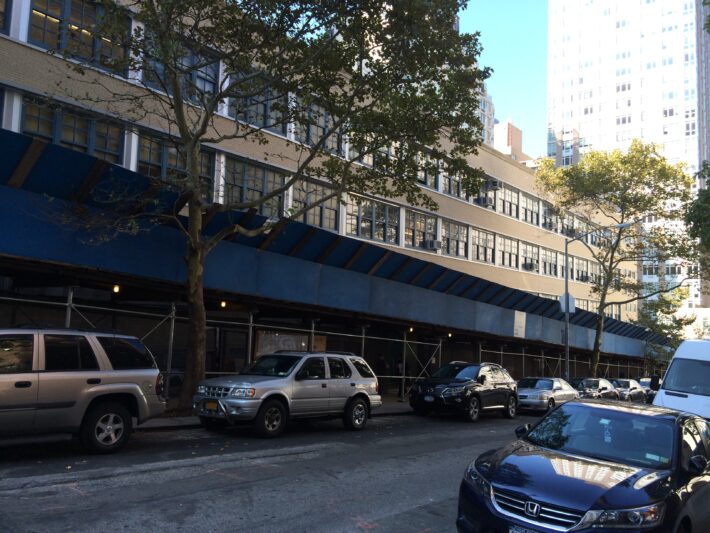
While most students have settled back into school rhythm, those who first spoke a language other than English, can have a harder time adjusting. Those who learn English early enough can juggle two languages productively — but the later the switch to English comes, the more difficult it is.
Students like five-year-old Ron Machtey have the best of both worlds. Machtey just began kindergarten at P.S. 191 Amsterdam. For the most part, according to his father, he enjoys it: Ron finds his homework easy; he breezes through addition problems and noun writing. Machtey moved from Israel to New York with his parents when he was two years old, and was enrolled in a dual-language program at Pre-School of America, the entry level of the New York Department of Education’s three-tiered program for students whose native language is not English.
Machtey is one of more than 140,000 New York City students who come from a home where a language other than English is spoken, approximately 18 percent of the student population, referred to as English language learners. According to the department’s annual report, language learners have a graduation rate of 34 percent, compared to 74 percent for all students. Shondel Nero, director of New York University’s multilingual multicultural studies department, says that the key to success is in getting students to use English for academic purposes, and not just for conversation.
“There’s a big difference between conversation English, which takes two to three years to learn,” said Nero, “[and] to learn English for school, to learn English to read textbooks and take standardized tests. That takes at least five years with optimum performance and high quality instruction – and that’s the ideal situation.”
Each spring, language learners take the New York State English as a Second Language Achievement Test to determine their proficiency and placement based on speaking, listening, reading and writing skills.
According to the department’s website, New York public schools offer three models for English language learners. Students first enter a dual language program where they’re taught in two languages – their home and language and English – so they build proficiency in both languages. As their English skills improve, they move into the “transitional bilingual education” program, and the amount of their native language instruction is reduced until they can fully assimilate in English-speaking classrooms. There is also a freestanding English as a second language program – known as ESL – for older students. At the end of the school year, students take the achievement test again to see if they still require language learner services.
“When students pass out of the [achievement] test,” Nero said, “they’re no longer eligible for ESL services, and that’s tricky … The test is literally a minimum standard. Students continue to need support.”
Nero said that institutions like the International Network for Public Schools have built a successful model for educating language learners because they “use language as a resource rather than a problem.”
The nation-wide network is a nonprofit institution that serves only high school English language learners, and opened its first school, The International High School at La Guardia Community College, in 1985. Currently, they have 18 schools, four in New York City.
“All of our teachers are language and content learners,” said Kim To, the network’s director of communications. Unlike New York public school students, who only have one English language learning class throughout the day, network students develop their multilingual skills in their math and science classes as well.
The four New York network schools have a 58 percent four-year graduation rate for language learners, compared to the DOE’s average of 32 percent. For a six-year graduation rate, that difference is even higher, with the network at 77 percent and the department at 57.
While the network could not provide its acceptance rates, To said that they mostly accept students who have moved to the U.S. in the past four years.
“Most ESL students are overwhelmed when they first arrive at our school,” said Trevor Safford, the network’s instructional coach and former English language arts teacher at the network’s Bronx branch, “and we take the time to acclimate them to our classroom. If we see a student who’s struggling, we pair them up with another student who speaks the same language.”
According to the DOE website, about half of English language learners were born in another country, and according to immigration activists, these students come with a different set of needs.
“Immigrants are fully aware of the need to speak English to succeed,” Nero said, a former ESL teacher and has worked with immigrant students and parents. “Most people don’t realize how difficult it is to learn for academic purposes, not just for survival.”
For almost a decade, the New York Immigration Coalition, a 25-year-old activist group, has had an education task force to assist New York’s immigrant student population. The coalition, made up of 20 advocates representing more than 20 ethnic groups ranging from Asian Americans for Equality to the Flanbwayan Haitian Literacy Project, meets monthly.
“Almost 60 percent of immigrant children who do not speak English as their first language are living in poverty,” said Max Ahmed, the coalition’s education advocate. He emphasized the need to learn English as a path to a better life, and said that sometimes the first step is to help a student’s parents.
“A lot of people forget that first-generation parents need a lot of support as well,” Ahmed said. “If they can’t understand a letter in the English language, they’ll go to our community-based organization to translate and interpret for them. It’s one of the few ways we can help [students] transition into these schools.”